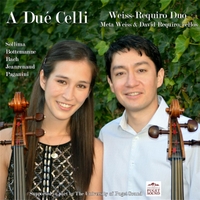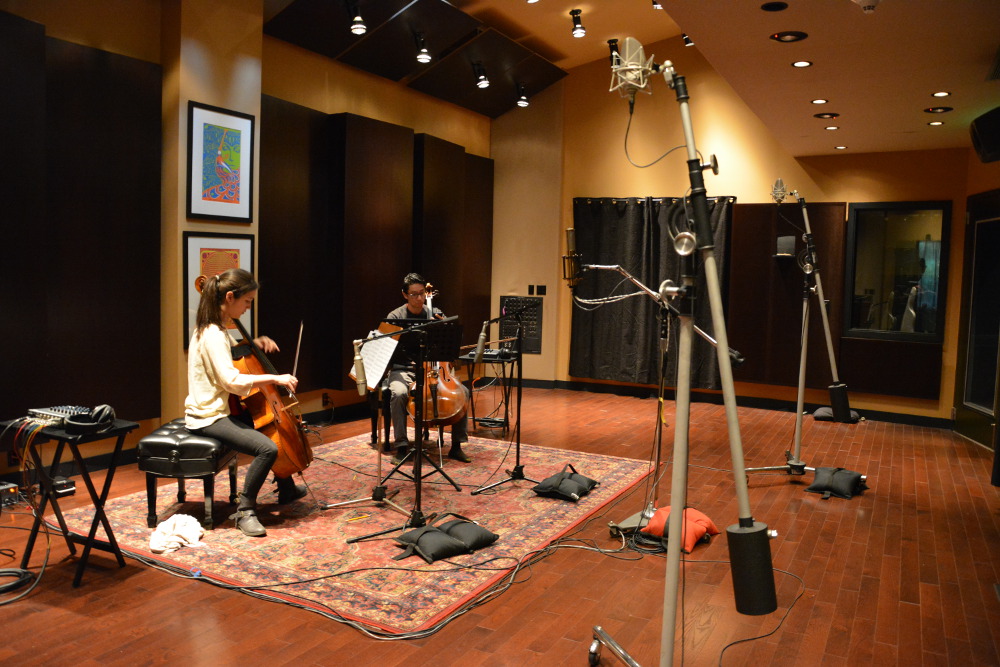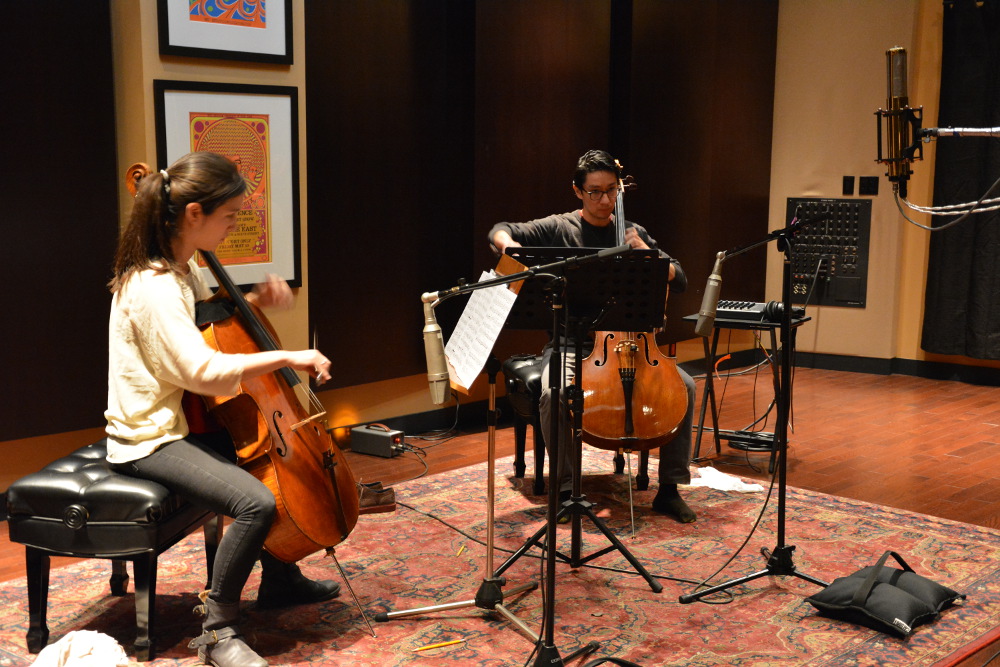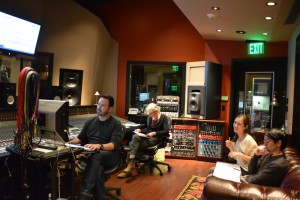Tracking Best Practices: Recording Cello at Studio Trilogy — San Francisco
“Detailed listening skills” – how many projects do you have that test yours?

“A Dué Celli” from the Weiss-Requiro Duo is an unusual pairing of two cellos, tracked at Studio Trilogy.
Audio engineer Justin Lieberman just had one at San Francisco’s Studio Trilogy, while recording the debut album A Dué Celli (visit the link for audio examples) by the duo of Meta Weiss and David Requiro. The record was produced by former Kronos Quartet cellist Joan Jeanrenaud, who also recently completed her new album, Visual Music at Trilogy.
San Francisco native Meta Weiss is an acclaimed soloist, who performs on a prized, centuries-old instrument with her Gioffredo Cappa cello, circa 1690. Meanwhile, David Requiro stands as a fast-emerging cello talent, and Artist in Residence at the University of Puget Sound where he is professor of cello and director of the chamber music program.
The new album from Weiss and Requiro includes plenty of compelling listening for the string-obsessed, including: J. S. Bach “Chaconne” (from the violin Partita in D minor arranged for two cellos); Niccolo Paganini ‘Variations on One String on a theme by Rossini” (arranged for two cellos); Giovanni Sollima “The Shooting,” “Il Pino,” “Il Tasso,” and “Le Sequoia”; Jean-Paul Borremanne “A Due Celli,” and Joan Jeanrenaud “Oulipo.”
With its unique ability to bridge the gap between jazz, classical, pop, hip hop and rock, tracking cello is a scenario every studio engineer must prepare for. Lieberman gives a clinic on recording this beautiful bowed instrument – whose noble roots date back to the 1530’s — in our first “Tracking Best Practices,” below.

Recording in Studio Trilogy’s live room: a pair of Neumann M150’s are wide in the room, with a Manley Gold Stereo mic in the center front, and a Neumann 269 close to each cello.
TBR Me!
Artist’s Name, Genre and Point of Origin: Meta Weiss and David Requiro / Weiss-Requiro duo with Joan Jeanrenaud producing
Website: http://www.cdbaby.com/m/cd/weissrequiroduo, http://metaweiss.com http://davidrequiro.com
Project: These sessions were for the album A Dué Celli
Tracking Location: Studio Trilogy http://www.studiotrilogy.com
Engineer: Justin Lieberman
Past History: I had not worked with Meta or David before. I really only knew that they were two amazing musicians with some really complicated pieces in the repertoire.
To prepare for the session I really just thought about an approach that would be true to the sound in the room and planned out an input list that I felt was appropriate.
Style Smarts: Engineering a session like this is appealing because of the level of musicianship. David and Meta are playing at a level that is quite a treat to listen to. They are so connected to their tone and feel and they have a pretty amazing connection when playing together.
These types of classical sessions can be complicated because the classical genre has an aesthetic that you have to be conscious of — most people are used to hearing this type of music in a hall type of setting, so finding a balance of conforming to the style’s aesthetic boundaries while imparting as much originality is the challenge for me.
Personally I want to try to push the envelope but never get in the way of the performance.
Instrumentation Information: Two cellos.

Lieberman used Neumann 269’s close to the cellos, with the Manley stereo mic off to the right of the picture.
Tracking It! Recreating the sound in the room is always one of my primary starting points.
For this project I used six microphones. Meta and David were sort of facing each other with a slight angle toward the front of the room, much like you would imagine them playing on a stage.
I started off with a Neumann M269 close to each of the cellos in cardiod. I used a BAE 1073 and Pultec EQP1 on each of these.
I like to play around with placement quite a bit on the close mics. From five feet back the overall tone of the cello is amazing but when you start to get close I find there are boomy spots and less toneful areas. If you move your head around with your ear facing the instrument you can often find a sweet spot that is pretty balanced.
After I have the first layer of microphones I used a Manley Gold Stereo mic with an API preamp placed in front of them about six feet, making a sort of triangle between the two instruments and the stereo mic.
I also used a pair of Neumann M150’s with API preamps placed pretty wide on the outside of both musicians.
For me the six-microphone setup really captures the room. I have the close mics to get detail and presence, the stereo microphone provides a nice image and the wide M150’s really help enhance the feeling of space in the recording.
Control Room: I recorded the project in Pro Tools at 88.2 kHz/32-Bit float. I prefer the 88.2Khz versus 96Khz because I think the eventual sample rate conversion to 44.1Khz is less drastic than 96Khz to 44.1Khz.

Critical listening in the control room, with Trilogy’s SSL 9000K.
Extra Extra: After the recording we took a little time to live with the reference mixes we made during the tracking session. Meta, David and Joan Jeanrenaud listened through for any areas that needed more detail.
After a few months we all reconvened and made a couple of edits and finalized the mixing. During the mixing I used a Bricasti M7 and mixed on our SSL 9000K back to Pro Tools through a Lavry Gold AD122.
What I Learned This Time Around: This session was incredibly enjoyable for so many reasons. The artists are really nice people and amazing at what they do.
Meta and David hear intricacies in their playing that are pretty amazingly detailed. Zooming into their level of awareness of their tone and performance was challenging – this project definitely exercised my detailed listening skills.
- Justin Lieberman, Engineer, Studio Trilogy
Please note: When you buy products through links on this page, we may earn an affiliate commission.







Tom Camp
January 20, 2016 at 2:03 pm (8 years ago)Wow. That’s such a nice setup for so much depth.